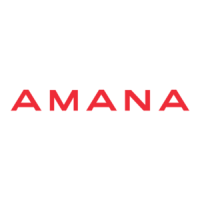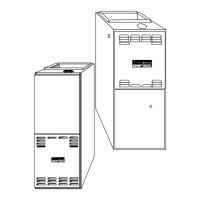®
WARNING
If the information in these instructions is not followed exactly, a fire or explosion
may result causing property damage, personal injury or loss of life.
– Do not store or use gasoline or other flammable vapors and liquids in the
vicinity of this or any other appliance.
– WHAT TO DO IF YOU SMELL GAS:
• Do not try to light any appliance.
• Do not touch any electrical switch; do not use any phone in your building.
• Immediately call your gas supplier from a neighbor’s phone. Follow the
gas supplier’s instructions.
• If you cannot reach your gas supplier, call the fire department.
– Installation and service must be performed by a qualified installer, service
agency or the gas supplier.
Comfort. Quality. Trust.
Heating
®
& Air Conditioning
GULA
Gas Fired Warm Air Furnace
User’s Information Manual
10318826 October 2002
You have purchased a high-efficiency, gas-fired, warm-air residential furnace. It is
designed to heat your home efficiently and safely. It is also designed to interface
with your cooling equipment and to assist in circulating conditioned air.
Your furnace functions are regulated by an integrated control module which re-
sponds to your home thermostat. This module controls all aspects of operation,
including safety and is designed to assure efficiency, reliability, comfort, and
safety.
Your furnace is built to provide many years of safe and dependable service, providing
it is properly installed and maintained. Take time to familiarize yourself with the
information concerning furnace installation, features, operation, and maintenance
contained within this manual.



